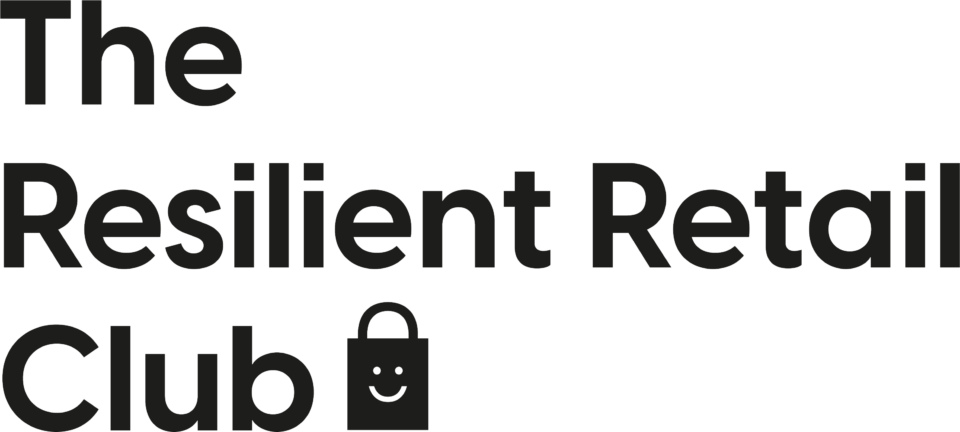Routines Of Highly Successful Retailers
Catherine Erdly: Welcome to episode 210 of the Resilient Retail Game Plan. Hi, I’m your host, Catherine Erdly. I’m also the founder of the Resilient Retail Club. That is my membership group and mastermind for product businesses. Go check it out at resilientretailclub. com.
So today we’re talking all about the routines of highly successful retailers.
I’ve been in the retail business now for 24 years. I have worked with everybody from pre startup brands all the way up to 2 billion companies. And so I have seen absolutely the full spectrum of businesses that do well and businesses that really don’t make it off the starting blocks. And what I wanted to do in today’s episode is touch on some of the routines and habits that successful retailers get into, whether they are big or small, to help them succeed.
Now, if you’re interested in what we’re talking about today, then do go check out the show notes because there’s a handy PDF guide that you can get from the link in the show notes that will give you all of these routines that I talk about in a handy format. So if you want to print it out, have it as a checklist or just have it there for you to refer back to, then you are welcome to. So go check out the show notes after the episode.
Welcome to the Resilient Retail Game Plan, a podcast for anyone wanting to start, grow or scale a profitable creative product business with me, Catherine Erdly. The Resilient Retail Game Plan is a podcast dedicated to one thing, breaking down the concepts and tools that I’ve gathered from 20 years in the retail industry.
and showing you how you can use them in your business. This is the real nuts and bolts of running a successful product business, broken down in an easy, accessible way. This is not a podcast about learning how to make your business look good. It’s the tools and techniques that will make you and your business feel good.
Confidently plan, launch and manage your products and feel in control of your sales numbers and cashflow to help you build a resilient retail business.
Why Routines Matter for Retail Success
Catherine Erdly: So first of all, why do routines matter? Well, routines are all about creating structure in your business. The thing is with retail businesses in particular is that they are effectively highly seasonal and highly predictable in, to a certain extent. Now, they’re also extremely unpredictable in the sense of you never quite know how a customer is going to react to your products or when you’re going to have a big spike of sales or a quiet month.
But over time you will see that there are definitely patterns that come time and time again and things that you can anticipate things that you can get ready for. And therefore it’s really helpful to have these routines built in, to be looking at the time ahead and Basically be much more proactive than reactive.
So reactivity or feeling reactive probably feels a little bit like being on a rollercoaster. You’re sort of being pushed from side to side by what’s happening. So when you’re being proactive, you’re taking the time to put these routines into place. You’re always got one eye on what’s coming next and you feel much, much more in control.
So these routines are really crucial in helping you feel in control of your business, feel prepared for whatever comes up. Because as I said, on the one hand, you can anticipate certain things in retail, but there’s always things you can’t anticipate. So if you’ve taken care or if you’ve managed everything that you could anticipate, then it gives you much more bandwidth for you to be thinking about the things that you maybe weren’t expecting.
So that’s why routines are important. And I’m going to start going through in this episode. I’m going to talk about daily routines, weekly routines, monthly routines, quarterly routines, and yearly routines, and a little bit about how they all fit in with one another. Now in terms of how you actually want to be doing these, we should really be starting with the yearly routines and then everything else flows from those.
But I’m going to start talking about the day to day and then work my way up Because I think it will put it all into more context if I do it that way around. But in your own business, if you never done a yearly planning session, for example, maybe you want to start with that to set your overall goals for the year before you start breaking it down into your quarterly goals, your monthly goals, and, and so on and so forth.
So that could be something for you to consider. If you get to the end of this episode and you feel like, I just don’t even know where to start, I would actually start at the end. At the end of the yearly piece and work my way back so that when you’re doing your daily work, you know, that it’s all fitting into a much bigger picture.
And that’s the other reason that these routines are so important, because it just helps us make sure that all of our activities that we’re doing, and we’re all doing a lot of things every single day, we’re making sure that they are all building towards something as opposed to feeling scattered and pulled in lots of different directions.
Daily Routines for Retailers
Catherine Erdly: So, daily routines. This actually does also come from a good weekly structure. So again, before you start working out what your daily routines are going to be, you probably want to get into the habit of having a good weekly routine, which I’ll touch on that in a minute. Basically you want to take the time to plan out your week and then have daily time blocks.
So this may look different for you depending on what you do in your business. But typically people will have a time block that relates to prepping their marketing for the week. They might have a time block dedicated to managing the team if they have a large team that they manage. They might have a time blocked out to do forward planning and thinking. A time blocked out to do their bookkeeping or their finances, their cashflow spreadsheet, that kind of thing. They might have time booked out equally to be working on product development or design. It all really depends on what your business is and what you need to be focusing on in that business.
So with your daily routines, what you want to do is work out, What it is that you want to fit in creating those blocks for the week. And my suggestion is always do those blocks first. So there’s this concept on Stephen R. Covey, seven habits of highly effective people, which is all about the big rocks. If you don’t know what I’m talking about, then go to YouTube and Google big rocks demonstration.
You’ll see a really good example of what that looks like, but essentially what it boils down to is if you want to fit something in, you do it first, because everything else will fit in around it. But if you do all of the other little stuff first, then you’ll never have time for that big chunk of concentration.
Now everyone works slightly differently, but the majority of people that I speak to concentrate best first thing in the morning. So make sure you’ve got this weekly routine mapped out so every day, you know what your time block is for that day and you start there, you start with that time block, you start with the most important task for the day, the things that you really want to concentrate and focus on and you get those done.
This can be really transformative to people. It’s especially good if you’re someone who is very limited on your time that you have to spend on the business. Maybe you are, for example, on the shop floor, or maybe you have caring responsibilities and therefore you have only a very specific number of hours to work on the business, whatever the situation might be doing the thing that you need to concentrate on most first will be transformational in terms of actually being able to move the business forward, as opposed to getting to the end of the day and feeling like, I don’t even know what I did today, but I just know I was busy all day long. So make sure that you put any reactive tasks. So reactive tasks are things like sending out orders, answering customer emails, answering general emails.
Talking to team members about inquiries, anything like that, anything that is reactive or almost what I would call like a low concentration task. You do have to think while you’re doing them, but they’re not something that you have to sort of sit quietly and really get your head in place to do it. Make sure you put those after lunch.
I think it works really well generally for most people to have a nice block of concentration in the morning to get things done, to get through things. And then in the afternoon, that’s when you deal with all of that reactive stuff. Whereas again, like. Emails are like ping pong, you know, you, you write an email and then another one comes back in response and you can actually just sit in your inbox all day long.
And it’s entirely possible to do that. And just responding to things as they come in and then you just never get anything done.
So make sure you get the things done that you want to in the morning and then everything else in the afternoon. There are some other things that you should be doing on a daily basis. So usually it’s to do with making sure everything is running smoothly, making sure your customers are happy, making sure there are no delays.
And also I think that getting inspired is a daily task. It’s something that you should always be doing, looking for new ideas, looking for inspiration, just as you see things, just Constantly be on the lookout as you’re going through daily life, just making sure that you are constantly thinking about what comes next and maybe have a swipe file for images, messaging, product ideas, all of that kind of thing is something that is a great habit to have on a daily basis, even if it’s five minutes a day
just thinking about what comes next for your business and looking for inspiration outside of yourself.
Weekly Routines for Retailers
Catherine Erdly: So down to the weekly routine. So as we’ve already touched on part of your weekly routine or a big important part of your weekly routine is planning out the week ahead. So make sure you have time either on a Friday afternoon or a Monday morning, depending on how you work best to actually plan out what is the focus for the week ahead?
What things do you absolutely have to do? What do you want your time blocks to be? What meetings or appointments are there that are going to maybe interfere with things and just basically getting yourself ready so that you go into the week, knowing what you want to do. So the other things that you will want to have a look at each week as a retailer is recapping your performance.
Now in a big retailer. This is the entire day on a Monday. Every single team prepares big, long reports, loads and loads of detail, pulls out all the product samples, has meetings with the senior management team, all talking about how everything is going. They’re looking at what trading actions they need to take, and they are basically reacting constantly to the previous week’s trade.
Now, personally, I think for most small businesses, that is Overkill to be doing that, to be spending an entire day on a Monday, looking at your performance. And for most people, it’s not that complex. So I would say on a Monday for sure, take a look, see how your sales were. If you have a weekly sales plan, then that’s one thing.
If you have got a monthly sales plan, it’s always worth checking in how you’re doing on the month to date. But ultimately it’s a quick check, looking at things like your average order value, your conversion rate, the number of orders that were placed, your overall sales, and just checking in and making a note of these so you can keep track as you go through.
It’s also a good. Routine to get into is to just check in each week with particularly is going on for you in your business. So for example, if you’re somebody who has a lot of orders that you’re waiting on, you’re constantly ordering things and getting things to come in and once a week you will want to check, do I need to order anything else?
What’s the status of my order? Check in with your suppliers and just make sure you’re on top of what you’ve got coming in when, uh, where it is, what stage it’s at, and just making sure you’ve, Run through it and had a look. You also can get into a routine if you’re somebody who does a lot of wholesale or corporate outreach, for example, making sure that part of your weekly routine is checking in with existing stockists or maybe reaching, doing your cold outreach, or maybe that’s one of your time blocks, but making sure that you are focusing on a weekly routine of checking in.
So it’s that kind of constant checking, just making sure everything’s okay. Everything’s ticking. If you have a cashflow planner, which I highly recommend that you do, then I will also suggest you update it every week. Personally, I find that once a week update of your cashflow probably takes 20 minutes.
Whereas if you do it once a month, it was magically take you four hours. And it also just keeps your fingers in really clearly on what’s going on in the money in your business, which is really super important.
So the other thing to check is, are you clear on what your theme is for the week for marketing?
Is everything happening that needs to be happening? And just a general check in once a week that everything is moving in the right direction.
Monthly Routines for Retailers
Catherine Erdly: So then this leads us on to the monthly routine. So monthly, for many people, this is going to be where you do your in depth detailed trading review like you would do in a big retailer once a week.
But for most businesses, once a month is going to be absolutely plenty. So The format that I like to use and we’ve used for many years in the side, the resilient retail club is looking at your overall sales. So how are you doing? How are you doing versus last year? How are you doing versus plan? How do your different revenue streams break down?
How’s it going according, you know, by sales channel, do you have a particular platform that’s working well? Another one’s falling behind what is going on and making notes and thinking about what’s happening and why. Definitely looking at your key statistics, such as your conversion rates, your average transaction value, your footfall counter, if you’re in a store and you have a footfall counter, things like that, just like a overall look at what are the numbers telling you? How’s it going? How many people did you have visiting your website? What’s your abandoned cart rate looking like? You can also look at things like your returns rates. How are they doing?
Are they trending up, trending down? And just generally having a look at how things are going, but in more detail. So you might well want to look at your social media activities. What posts worked really well? What ones seem to drive the most traffic to the website? Or did you see spikes after certain posts went up?
What about things like your emails? When you look at the emails that you sent, how much money did they generate? What your click through rates looking like your open rates, just generally having a look at how everything’s going, making notes, and then also updating things like your stock plan. So if you have a stock and sales plan, you update it once a month with your current sales, your current stock purchasing, you then can have a look and see how much budget you’ve got going forward for your purchases.
Is your stock piling up or actually, is it doing okay? And then. Having a handle on all of this will allow you to then really get into the position where you can make these trading decisions. So trading decisions are all about asking yourself, what do I need to do? So for example, if sales are going really, really well, I would start asking yourself questions like, what is happening here?
Why is it doing well? What is it that’s working? Do I need to buy more of that? Do I need to ask my supplier if they can increase the next repeat order.
And if things aren’t working, then you can ask yourself other questions such as, do I need to run a promotion on certain things to grow my sales? Is my stock beginning to pile up? Do I need to cancel some future orders? What could I do? What let’s brainstorm some ideas.
Do I need to add to my current marketing plan for the month, the next month to help me push sales? did I send emails? Do I need to send more emails? is my current social media content working? And so I need to switch it up. These are all really great questions. To ask yourself on a monthly basis, because it just means that you’re really, really clued into what is going on in your business and you’re taking actions that actually improve the situation.
So you don’t end up where your sales are doing really well, but you’re not really addressing it and then you run out of stock, for example, or you have a tough sales month and you just get into denial about it and you don’t take any action and your stock piles up, for example. So. There’s lots of different things that you want to look at, but what you’re trying to do here is trying to hone in on what’s happening and how you can make it better.
Quarterly Routines for Retailers
Catherine Erdly: And on a quarterly basis, quarterly routines are all about setting your priorities. I’m a big believer in setting your focuses for three months at a time to avoid the sense of being spread too thinly. I talked to lots of people who, who are, Absolutely taking loads of action in their business. They’re doing lots and lots of different things, but it can feel quite overwhelming.
And as a result, they are not really focusing on say three key things for the next three months, which allows them to get deeper, be more efficient, get further and actually make these things work for them. Instead, they get pulled in lots of different directions, which scatters their attention, scatters their efforts, and ultimately doesn’t give them as good results.
So setting your priorities on a quarterly basis looks like this. You would want to start off with doing a SWOT analysis. So a SWOT analysis is your strengths, weaknesses, opportunities, and threats. So this is the opportunity for you to really sit down and look at where you’re at in the business. What’s working well, what’s not working so well, What opportunities you’ve got and, and what things you need to be aware of I call these the 3am thoughts.
So the things that you wake up maybe at 3am thinking about, but you get them down on paper and you, and you’re able to actually take a look at them and make decisions about what you want to do. Then you want to make sure that you can set your key focuses for the next three months coming up. So what are you going to be focusing?
What are three main things for you to focus on? So you might, for example, be focusing on SEO of your website because that’s something that you want to tackle. So that’s going to be a big focus for you. You might also be focusing on wholesale outreach because that’s an important growth avenue for this month.
And you might be working on a, Influencer outreach or collaborations with other businesses. Those might be your three big things. So each quarter you can decide what your three focuses are for the quarter ahead. Set yourself some goals, like what do you want to have achieved in the next three months? And then off you go without feeling that being spread super thinly.
And what I always say with this is it’s. Not, it’s not no forever. It’s just no for now. So if you’ve had, if you’ve got a list of 15 other things that you could do, then that’s fine and you may eventually do them, but don’t try and do them all at once. So try and be super focused, which is why a quarterly routine of planning is excellent, really good way of doing it.
Lots of other things you can think about, like checking your plans for product launches, looking at your key marketing campaigns coming up, just checking in what your support you have, how. And how you’re looking after yourself, you’re planning a holiday, when you’re going to take time out in the next three months, and then also your cashflow forecast quarterly is a great way to just really have a look at your cashflow forecast coming up and to make sure that you’ve identified any pinch points.
Yearly Routines for Retailers
Catherine Erdly: And then finally a yearly routine. So yearly routine is kind of like the quarterly, but even bigger. So you’re setting your goals for the year. I often suggest having five key focuses for the year overall, which may be that each quarter, you know, you’re covering one of those, a couple of those five or three of those five, and then eventually throughout the whole year, you get through all of them.
But again, we’re talking about being really focused here. And that is, I’d say one of the things, one of the key hallmarks of successful retailers is they are really focused. They don’t get too distracted. They try things, but they don’t, but then they’ll decide, am I going to, And am I going to really go for this or I’m not going to go for this and they are able to stay focused and they keep their teams focused and they just really connect with great products that their customer wants and some key initiatives in the business to move it forward as opposed to getting super scattered and um, that’s a quick route to burn out.
So you, on a yearly basis, you would be doing things like setting your goals. Reaffirming your longterm vision for the business, going through your bills and expenses, setting yourself revenue and profit goals, definitely setting budgets, stock budgets, purchasing plans, creating your stock plan for the year, reviewing your team and setting their goals and then reviewing what support you have and what structure you have so that you can be sure that you have got the best support in place for you.
Conclusion and Additional Resources
Catherine Erdly: So, Those are the routines in a nutshell. They go from, as I said, from yearly setting your goals down to daily. If you want to know more about them and have a really handy guide so you can have them in detail and then start using them in your own business to help you with that focus, then head over to the show notes for this episode and you will find a link to a download in the show notes.
That’s it for me. If you have a moment to rate and review the podcast, it makes a huge difference in getting it out to other people. And of course, if you like, subscribe, follow, whatever it is on the platform that you listen on, then you’ll be the first to know about each new episode every Thursday. See you next week.







